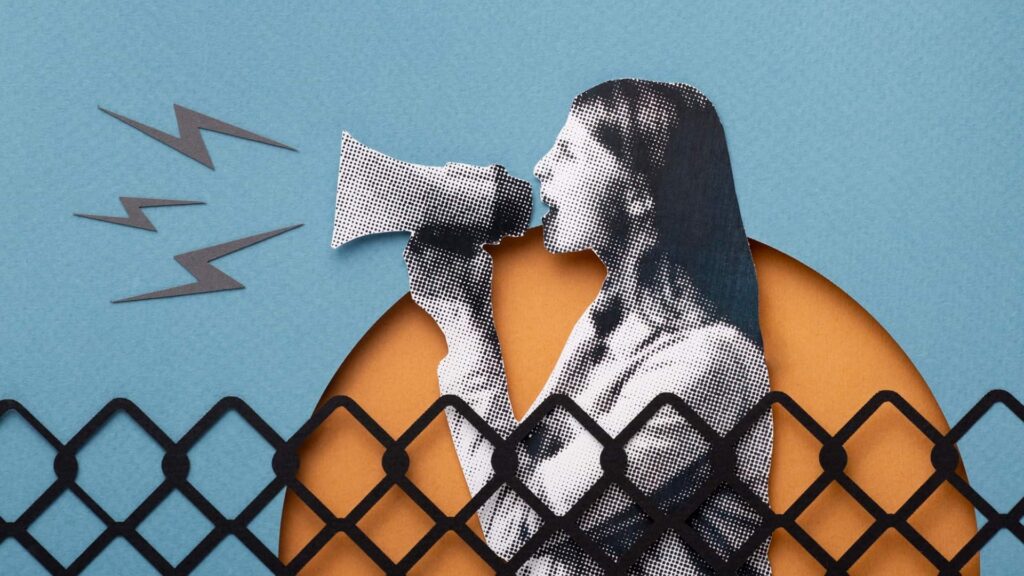The Rise of Misinformation is not related to social media, nor is social media to solely blame for it. Although people have believed and circulated Misinformation since the beginning of evolution, social media has made the issue worse. Even a small false claim can spread rapidly over hours because of global platforms, smartphone access, and viral algorithms.
Our analysis demonstrates that, while not the sole factor, social media has been a significant contributor to the spread of false information. Sensationalist media, political motivations, and increasingly powerful AI tools all play a part. There are serious societal consequences, ranging from general worry and disruptiveness to public health emergencies and election uncertainty.
Nonetheless, the Rise of Misinformation appears to be present on social media in the modern social media-connected world. We hear about online fringe theories, viral pranks, and “fake news,” and we question whether social media is to blame for this flood of the Rise of Misinformation. Well, there is an explanation of the differences between Half-truth and disinformation, why the phrase “fake news” is inaccurate, and how social media platforms can contribute to the distribution of false information. Furthermore, there is the role of AI and deepfakes, political and media-driven disinformation.
Disinformation (and Fake News) vs. Misinformation

Let’s define terminology first. Inaccurate or misleading information spread without mean intent is known as Misinformation. For instance, it is incorrect to tell a friend that the grocery shop shuts at 7 a.m. on Sundays when it opens at 8 a.m.; it is a mistake rather than a lie, we can say. Disinformation, on the other hand, is intentionally misleading information sent to deceive others, frequently for financial or political advantage. Simply put, Misinformation is typically unintentional (just incorrect data), whereas disinformation is deliberate (a falsehood).
Although the term “fake news” has gained popularity, experts caution that it is politically loaded and unclear. These days, Misinformation and disinformation are more appropriate labels to use. The term “fake news” was first used to describe news-style websites that create spectacular stories; examples include biased “news” pages or parody websites that pose as legitimate. To weaken factual news, people occasionally even call it “fake”.
The Spread of False Information on Social Media
False Information spreads very easily due to social media. Sensational or unique stories frequently receive more hits, regardless of their truth, and algorithms on social media sites like Facebook, Twitter, and TikTok favor content that encourages interaction (likes, shares, and comments). In one well-known instance, when anything extreme or unusual happens, the amount of false information we see spreading online is insane.
Twitter, Instagram, and other social media sites are critical in distributing the rapid and far-reaching spread of information,” according to the WHO. Unfortunately, this includes incorrect information. As a result, lies, deceptions, and myths can spread quickly over the world in a matter of minutes.
Statistics and Examples of Misinformation (2024–2025)

The stakes are shown by real-world examples. Social media was flooded with conspiracy theories and deceiving remedies during the COVID-19 pandemic. According to a WHO analysis, up to 51% of social media posts promoting vaccines between 2020 and 2022 contained false information. Nearly half of American adults in one online forum said they had come across a “significant amount of made-up news” on COVID-19. In other places, a flurry of messages criticizing vaccines and promising cures was generated by bots. As a result, vaccine hesitation and even outbreaks occurred. Another glaring example is political disinformation.
According to polling data, people’s perceptions of candidates and policies were impacted by such assertions. According to studies, Americans are cognizant of this issue: According to PewResearch.org, 73% of respondents stated they at least occasionally saw “inaccurate news” regarding the election. 57% of American respondents in 2024 expressed that artificial intelligence would be used to produce and disseminate false information about political candidates.
Furthermore, a recent Brookings analysis revealed that only 20% of Americans are “very confident” in the integrity of the American electoral system, with more than half expressing “little or no confidence” that elections accurately reflect the will of the people. These findings highlight the profound effects of political disinformation.
Furthermore, the Rise of Misinformation has taken on a new dimension due to artificial intelligence. In just a few seconds, generative models can produce believable text, graphics, and sounds. Today’s AI can create content “so advanced that humans can perceive it as indistinguishable from human-generated content,” according to studies.
In reality, this makes it simpler than ever to produce deceiving voices and faces.
Combating Misinformation Online: What Can We Do?

Fortunately, there are ways to Misinformation on the internet. A mix of legislation, technology, and education can have an impact, but no single answer will be effective. The following are some crucial strategies based on advice from experts:
Teach people, particularly young users, how to critically assess information by implementing media literacy education. This involves identifying bias, validating dates, and confirming sources. Schools and communities are being urged by UNESCO, governments, and non-governmental organizations to drastically increase media and digital literacy initiatives. To help individuals recognize false health information, the WHO recommends, for instance, awareness campaigns and “improving … digital and health literacy.” In actuality, this is learning to inquire, “Who wrote this, and why?” before disclosing any information.
Trusted Supervisors and Fact-Checking: Promote or reward fact-checking. Viral lies can be swiftly disproved by news outlets and independent organizations. Users are also empowered by new technological tools. For example, MIT researchers created Trustnet, a browser extension that enables users to follow other reliable checkers and mark content as true or false on any website. The goal is to decentralize fact-checking so that even when you browse unknown social media, you see endorsements or cautions from individuals you can trust. One study found that people who used these tools became more critical of posts.
Platform Measures: Social media companies must tweak algorithms and policies. This can include limiting the reach of accounts that repeatedly post Misinformation, adding friction (e.g. warnings before resharing sensational claims), and downgrading content flagged by fact-checkers. After 2020, many platforms added disclaimers or removed posts about election fraud. When algorithms push engagement, a healthy dose of human review or stronger spam detection can slow the spread of obvious deceptions. Importantly, platforms should be transparent about how content is prioritized (for instance, why a false story might have gone viral). While we worry about censorship, many experts agree that some oversight is needed to protect the public’s “right to truthful information.”
Technological Solutions: AI can combat AI. Researchers and businesses are developing autonomous disinformation filters and deepfake detection technologies. Google and Microsoft, for instance, claim to have classifiers that can identify text produced by models similar to GPT. Meanwhile, problematic posts can be flagged for human review by better moderation methods (using AI to detect hatred or misinformation). Although these techniques aren’t flawless, they can identify a certain proportion of hazardous Misinformation content.

Legislation and the Community: Governments can contribute by helping fact-checkers and providing financing for journalism. Several nations have considered laws that would penalize malicious disinformation efforts or require transparency in political advertising.
The WHO evaluation suggests “legal policies, awareness campaigns, [and] improved mass media content” as a general strategy to combat health misinformation. Importantly, any restriction must be targeted wisely and preserve free speech (for example, focused on foreign involvement or automated bots rather than suppressing free speech). Public service announcements (such as PSA videos dispelling common misconceptions) and community guidelines can further increase awareness in the interim.
Nonetheless, every user can assist with personal habits. Consider it carefully before sharing a viral meme or reposting attention-grabbing news. Is it from a reliable news source? Is it being covered by mainstream media or other fact-checkers? Accurate information is frequently found on websites such as WHO, CDC, or credible media. “Report misinformation” buttons are also integrated into a lot of social networks. In real life, reconsider and perhaps do a short Google search to double-check. A series of lies can be slowed down by little acts like these.
Ultimately, collaboration between academics, the media, digital corporations, governments, and citizens is necessary to counteract misinformation.










